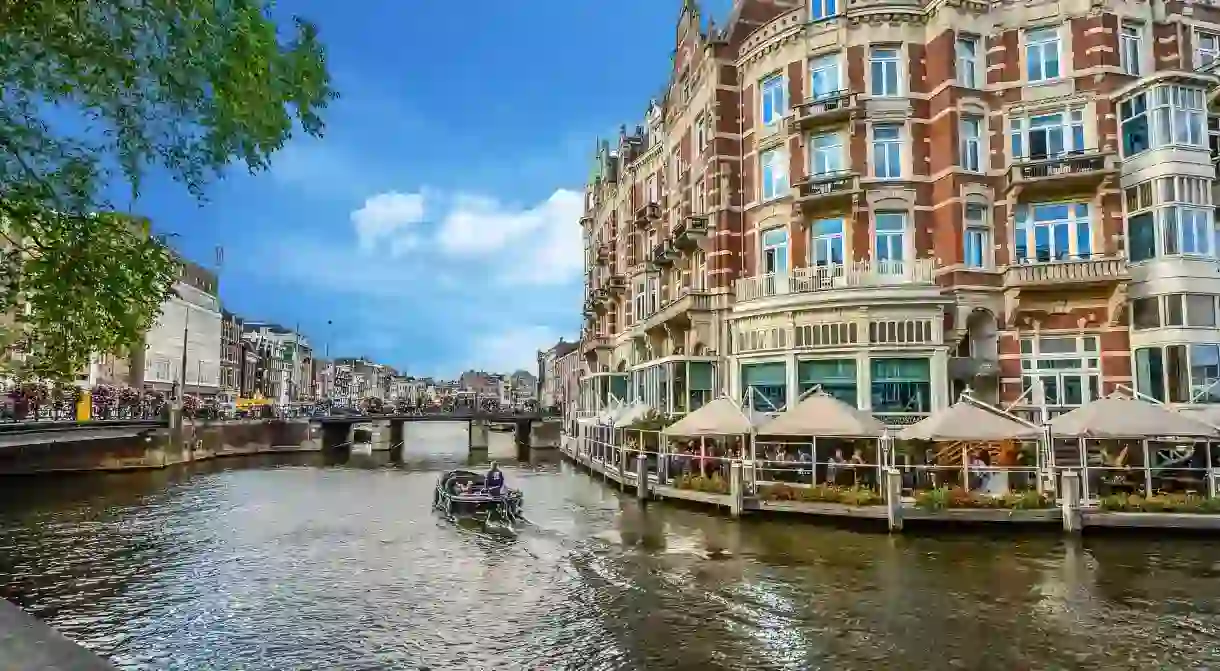10 Things You Didn't Know About Amsterdam's Canals

Amsterdam’s concentric canal system is among the most iconic landmarks in the world and attracts millions of visitors every year. Although these charming waterways are certainly easy on the eye, they were built in order to fulfill several civic functions and have played a pivotal role within Amsterdam’s history.
There are Over 100 Kilometres of Canals in Amsterdam
Despite its relatively small size, it is surprisingly easy to get lost in Amsterdam, partly due to the city’s unique layout. Unlike most larger urban hubs, Amsterdam’s streets curl around its centre forming a set of rings that follow its canal belt. This tiered system of waterways takes up over 100 kilometres of space and is among the largest construction of its kind ever built.
Amsterdam’s Inner Canals Are an Unesco Heritage Site
In 2010 UNESCO officially recognised Amsterdam’s inner canal ring as a world heritage site and placed them under protection. This historic site trails around Dam Square and runs inside of the semi-circle created by Prinsengracht canal. Like all UNESCO landmarks, the canals are maintained according to international laws in order to preserve their historical and cultural significance.

The Canals Are Still a Vital Part of Amsterdam
Although the canals are now protected (and often over 400 years old) they still play an important role within Amsterdam’s city life. Besides being one of the main modes of transport around Amsterdam, the canals also host several events throughout the year, including a huge parade during Pride and other outdoor events such as de Grachtenfestival.
There Over 1000 Other Monuments Inside Amsterdam’s Canal Ring
Because of their age and centrality, Amsterdam’s canals contain a whole host of historical sites. In fact, there are currently at least 1,550 monuments inside their borders, including several extremely important landmarks and museums such as Westerkerk, Anne Frank Huis and Museum van Loon (not to mention the hundreds of picturesque, 17th century townhouses on their banks).

For Most of Their Existence the Canals Smelled Terrible
Before the 20th century Amsterdam’s canals were notoriously polluted and stunk up the whole city. Most Amsterdammers viewed the canals as open garbage pits or sewers and liberally threw waste into their waters. Thanks to the Dutch governement’s ongoing efforts, the canals are now quite clean and actually host an annual swimming event called Amsterdam City Swim.
Up To 15,000 Bikes Are Fished Out of the Canals Every Year
Out of the 881,000 bikes in Amsterdam over 10,000 end up in the city’ canals every year. This statistic is largely due to theft, vandalism and sheer laziness, as many people prefer to throw their broken bikes into the canals, rather than dispose of them properly. In order to keep these waterways clear, Amsterdam’s municipality sends out specialised boats to fish up said bicycles.
The Canals Were Mainly Built Between 1585 and 1665
By the end of the 16th century it became clear that Amsterdam’s older canals needed improvement and the city’s government began working on what would eventually become the Grachtengordel (the Canal Belt). Over the next century Amsterdam’s historic centre was dug out and reshaped in order to meet these demands, leading to its current, concentric layout.
The Canals Were Originally Meant to Completely Encircle Amsterdam
Although certainly impressive, Amsterdam’s inner canal belt was originally designed to create an unbroken barrier around the entire city. However, due to an economic crisis in 1672 these plans were never finalised and eventually abandoned, leaving the eastern quarter of Amsterdam’s canals unfinished. Soon after, this stretch of land was converted into parks and orchards, leading to the creation of Plantage – a neighbourhood that now contains Artis Zoo and Hortus botanical gardens.

Singelgracht Marks Amsterdam’s Old City Limits
Besides transportation, Amsterdam’s 17th century canal ring was also designed to defend the city and acted as an enormous moat. This strategic role was mainly fulfilled by Singelgracht, which still delineates Amsterdam’s historic city limits. In fact, until relatively recently any settlement beyond Singelgracht wasn’t part of Amsterdam proper at all.
Many Artists Have Been Inspired by the Canals
For obvious reasons, Amsterdam’s iconic canals have appeared in many works of art over the years. Claude Monet, for example, famously painted a beautiful landscape featuring de Zuiderkerk and De Groenburgwal canal while visiting Amsterdam in the late 19th century. Albert Camus also depicted the waterways via prose in his magnum opus, The Fall, where he compares Amsterdam’s concentric canal belt to the circles of hell.














